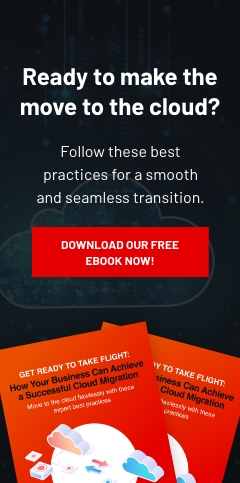Data is essential to your business's smooth operations.. Losing business data because of natural disasters, cyberattacks, or equipment failure can lead to productivity disruption, loss of customer trust, reputational damage, compliance issues, legal fees, and even permanent business closure.
Having a well-maintained and secure backup of your organization's data is the best way to prevent data loss, and it will help your business recover quickly after a disaster. This article will focus on key backup management best practices your business should implement.
1. Formulate a backup strategy
Meet with your IT staff or managed IT services provider (MSP) and discuss how to create an effective backup strategy. Here are some of the important factors or questions that need to be considered:
- What data needs to be backed up?
- Where should data be backed up?
- How regularly should backups be performed?
- Who will perform the backups?
- Who will oversee the success of your backups?
2. Create and follow a backup schedule
Scheduling your backups will ensure your data is saved regularly. You can create an effective backup schedule based on how frequently data is updated. For example, critical business data that is continuously updated needs to be backed up daily, whereas static data may only need weekly backups.
Stick to your backup schedule as much as possible and only modify it in case of business-related changes. Automating your backups is a good way of ensuring backups are made according to your schedule.
3. Determine how long to keep your backups
Retaining every copy of your backup forever is not practical and takes up storage space. Formulating a retention schedule will help you manage your backups and storage capacity effectively. For example, daily backups should only be retained for a week, weekly backups for at least a month, and monthly backups for a few months. You can also use deduplication technology to eliminate identical copies of your backups. This is an effective way of freeing up storage space for mission-critical data.
4. Use multiple backup repositories
Having more than one backup repository ensures that you always have access to a copy of your backups should one repository become inaccessible. In the event that your on-site servers are compromised, backups stored in the cloud will allow you to access your data without disrupting your operations.
5. Encrypt your backups
Encrypting your backups, whether on a local drive or in the cloud, adds an extra layer of security to prevent unauthorized individuals from accessing your data. For instance, if a thief steals your removable backup drive, they won't be able to access it without the correct decryption key. The same goes for backups stored in the cloud: if you encrypt them, cloud providers cannot access or expose your private data.
6. Run tests and simulations
Performing regular tests and simulations is a way to determine the effectiveness of your backup strategy. It will demonstrate how your IT staff or MSP will react during a disaster and help you evaluate your backup procedures, identify weak points, and make the necessary adjustments.
7. Read your backup reports
Failing to read backup reports can cause you to miss important details such as how many restore points you have, how much storage space is left, and how backup failures came to be. Not being able to spot these important items in your backup reports can potentially lead to data loss and disruption of your operations.
These vital backup management best practices can prevent data loss and allow your business to quickly bounce back after a disaster. If you feel managing a backup and recovery plan is too daunting, partner with a trusted MSP like Complete Document Solutions. Our data backup and recovery service automatically saves your data to our off-site locations where it's safe and restorable within minutes. Call us today to learn more.



Leave a comment!